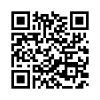Cultural representation in the ELT textbook "Work in Progress"
Downloads
The present study uncovered the cultural contents of the Indonesian ELT textbook for tenth-grade secondary-level students Bahasa Inggris "Work in Progress" based on the cultural types using content analysis. The book is chosen because it is nationally used and based on the curriculum Merdeka 2022. This study focused on analyzing the cultural contents, represented with graphical images integrated with text (e.g., pictures with monologue, dialogue, or description). The findings showed that among the four types of culture, the Target culture was dominantly represented in the textbook 59 times (50,9%). Then, it was followed by the culture neutral 23 times (19,8%), the international culture 18 times (15,5%), and the last source culture 16 times (13,8%). The various and well-organized cultural content proportion should be put more attention.
Downloads
Ariawan, D. A., Nurkamto, J., & Sumardi. (2022). Critical discourse analysis of cultural representations in EFL national commercial textbooks. Studies in English Language and Education, 9(3), 1112-1127. https://doi.org/10.24815/siele.v9i3.24579
Astiandani, F.R., and Purwati, O. (2021). A Content Analysis of Cultural Representation in High School English Textbook in 2013 Education Curriculum. Journal of English Language Teaching, 9, 38-46. https://doi.org/10.32332/joelt.v9i1.2994
Baleghizadeh, S., & Shayesteh, L.A. (2020). A content analysis of the cultural representations of three ESL grammar textbooks. Cogent Education, 7. https://doi.org/10.1080/2331186X.2020.1844849
Brown, H. D. (2000). Principles of language learning and teaching. Longman. http://angol.unimiskolc.hu/wpcontent/media/2016/10/Principles_of_language_learning.pdf
Byram, M. (1997). Teaching and Assessing Intercultural Communicative Competence. Multilingual Matters.
Chao, T. (2011). The hidden curriculum of cultural content in internationally published ELT textbooks: A closer look at new American inside out. Journal of Asia TEFL. 8. 189-210. https://www.researchgate.net/publication/286980308
Cortazzi, M., & Jin, L. (1999). Cultural mirrors: Materials and methods in the EFL classroom. Cambridge University Press.
Kramsch, C. (1995) The cultural component of language teaching. Journal of Language Culture and Curriculum, 8, 83-92. https://doi.org/10.1080/07908319509525192
Krippendorff, K. (2004). Content Analysis: An Introduction to Its Methodology (2nd ed.). Sage Publications.
Lee, J. F. K., & Li, X. (2020). Cultural representation in English language textbooks: A comparison of textbooks used in mainland China and Hong Kong. Journal of Pedagogy, Culture & Society, 28, 605-623. https:// doi.org/10.1080/ 14681366.2019.1681495
Lempers, J. D., & Clark-Lempers, D. S. (1992). Young, middle, and late adolescents' comparisons of the functional importance of five significant relationships. Journal of Youth and Adolescence, 21, 53-96. https://doi.org/10.1007/BF01536983
Liu, Y., Zhang, L. J., & May, S. (2021). Dominance of Anglo-American cultural representations in university English textbooks in China: A corpus linguistics analysis. Journal of Language, Culture and Curriculum, 35, 83–101. http://dx.doi.org/10.1080/07908318.2021.1941077
Miles, M. B., Huberman, A. M., & Saldaäna, J. (2014). Qualitative data analysis: A methods sourcebook. SAGE Publications. https://us.sagepub.com/en-us/nam/qualitative-data-analysis/book239534
Risager, K. (1991). Cultural Studies and Foreign Language Teaching after World War II: The International Debate as Received in the
Scandinavian Countries. In D. Buttjes, & M. Byram (Eds.), Mediating Languages and Cultures: Towards an Intercultural Theory of Foreign Language Education (pp. 33-46). Multilingual Matters.
Sihombing, T. & Nguyen, M. (2022): Cultural content of an English textbook in Indonesia: text analysis and teachers' attitudes. Asian Englishes. https://doi.org/10.1080/13488678.2022.2132131
Sulistiyo, U., Wulan, R., Al Arif, T. Z. Z., Efriza, D., & Anwar, K. (2021). A critical content analysis of English textbook for senior high school students in Indonesia. Journal of Studies in English Language and Education, 8, 84-98. https://doi.org/10.24815/siele. v8i1.16778
Wallen, N. E., & Fraenkel, J. R. (2001). Educational research: A guide to the process. Lawrence Erlbaum Associates Publishers. https://psycnet.apa.org/record/2000-16264-000
Weninger, C. & Kiss, T. (2013). Culture in English as a Foreign Language (EFL) Textbooks: A Semiotic Approach. TESOL Quarterly, 47. https://doi.org/10.1002/tesq.87.
Yuen, K. M. (2011) The representation of foreign cultures in English textbooks. English Language Teaching Journal, 65, 1–9. http://dx.doi.org/10.1093/elt/ccq089
Zhang, X., Su, X. A. (2021). cross-national analysis of cultural representations in English textbooks used in China and Germany. Journal of Social and Science, 1. https://doi.org/10.1007/s43545-021-00088-8
The authors who publish this journal agree to the following requirements. The author retains the copyright regarding the work being simultaneously licensed below Creative Commons Attribution ShareAlike License.

Jurnal Diksi by Faculty of Languages, Arts, and Culture, Universitas Negeri Yogyakarta is licensed under a Creative Commons Attribution-ShareAlike 4.0 International License.
Based on a work at http://journal.uny.ac.id/index.php/diksi




















